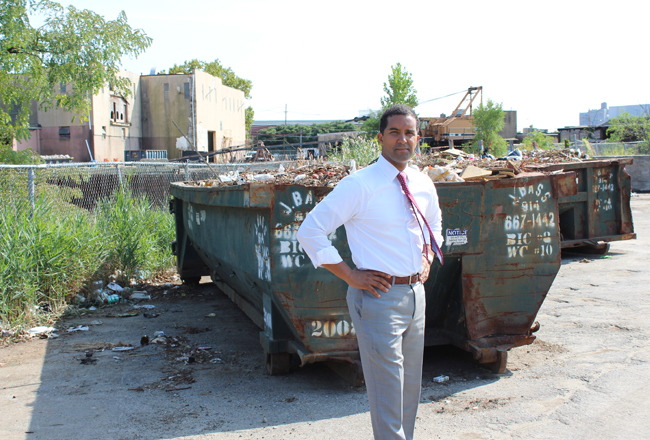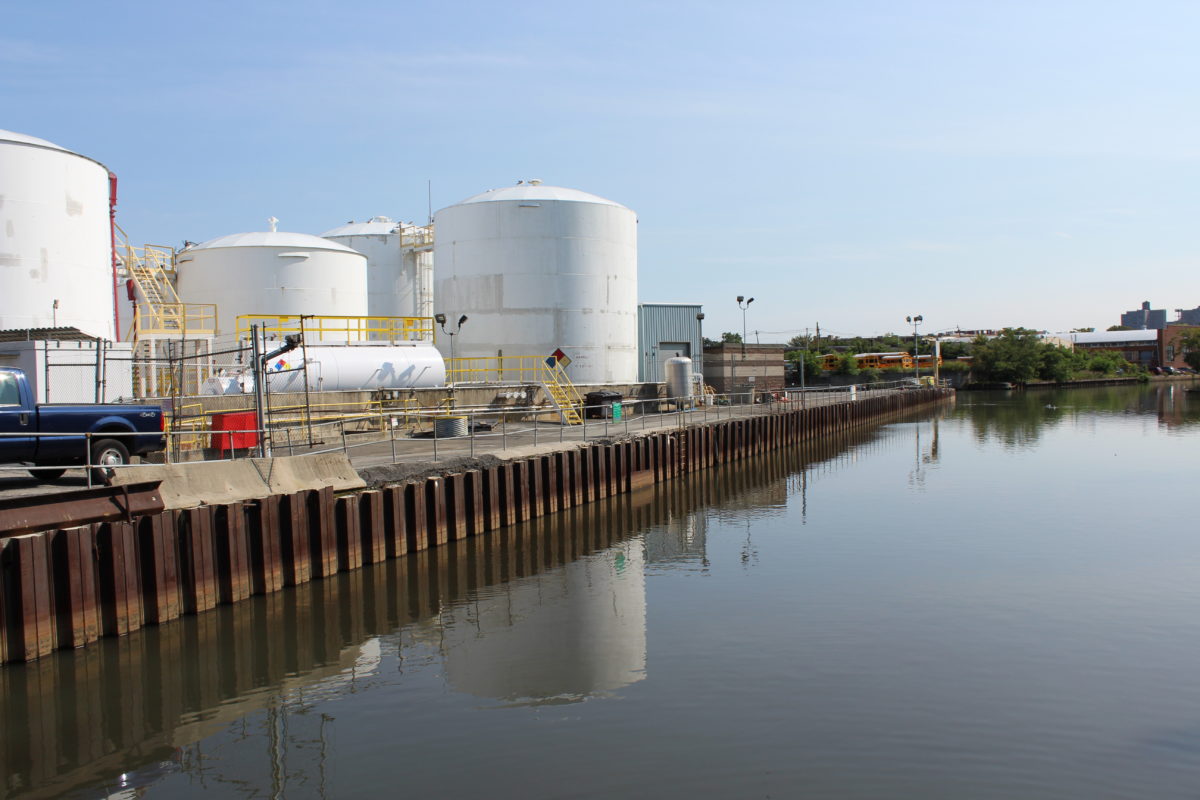Mayor pushes for cleanup of Mount Vernon’s ‘Big Stink’ on the Hutchinson River

An impending federal lawsuit could become the impetus for converting the dirty, stinky, silted, noxious, underused waterfront along Eastchester Creek in Mount Vernon into a recreation and dining destination.
Or at least that”™s the theory.
For 14 years, Mount Vernon has ignored federal Environmental Protection Agency consent decrees, according to Mayor Richard Thomas, and now the U.S. Department of Justice is about to sue the city for violations of the Clean Water Act.
Thomas wants to use the threat of federal sanctions to compel every elected city official to commit to cleaning up the waterfront.
Doing so, he said, would convert a liability into an asset and stimulate economic development. The city”™s public works salt storage and recycling center, for instance, could be transformed into a waterpark and sports complex.
Waterfront cleanup is part of the Canal Village Revitalization Plan, a broader initiative that has been underway for several years. The city has received two state grants to create a master plan for redeveloping 241 acres in its heavily industrialized southeast section. The master plan would enable the city to pay for improvements with state and federal development grants.

Thomas is focused on a few acres at the public works facility and the adjacent Sprague Operating Resources petroleum tank farm.
He refers to this location as “the Port of Mount Vernon.” The narrow creek, also called the Hutchinson River, flows into Eastchester Bay and Long Island Sound. About 700,000 tons of materials ”” petroleum, sand and gravel, rock salt, scrap metal ”” are transported upriver to docks in Mount Vernon. The channel has become so clogged with silt that tugs and barges can navigate only at high tide.

Next month, Sprague will begin dredging 12,500 cubic yards of material and carving out a nine-foot-deep pathway. The project will cost $2 million, Thomas said, and the city will pay half.
He wants to spend another $4 million cleaning up the public works yard, or as he puts it, “getting stuff off the waterfront.”
A lot of the stuff is recycling materials that are stored in roll-off receptacles and yard wastes that are piled all over the place. The city pays a carting company $280,000 a year to move the stuff about 150 yards to a county waste transfer station.
Tons of salt used by several towns are stored in a rickety wooden structure next to the creek, where rain easily washes sodium into the waterway.
“This is just sloppy,” Thomas said, waving his arms at the stuff spread out indiscriminately near the creek. “We don”™t need this much space for this much material.”
He said everything now contained on 20 acres can be consolidated on two acres. Salt mounds would be moved to a suitable structure closer to the public works garage. Recycling operations would be placed next to the waste transfer station. Public works and the Sprague facility would be walled off with fences and greenery.
The mayor thinks the work could be done in two years. Then the emptied space would be available for development.
Thomas is proposing a water park, including a swimming pool, bath house, sandy beach, boat launch and restaurants.
“I don”™t anticipate people swimming in the Hutch, yet,” he said. “But I can see them eating here and swimming in a pool and kayaking and boating and fishing.”
The Sports Underdome, the Ice Hutch, Glover Field and Memorial Field are lined up parallel to the creek. Thomas would like to expand the athletic facilities in a Chelsea Piers-like glass and steel and concrete structure.
Between the creek and athletic fields, you can barely make out the trailhead of an overgrown path that hugs the waterway up to Willson”™s Woods Park. Trail access is blocked by the public works operations. If that were opened up and the land were reclaimed, Thomas said, “You would see joggers all the way up to Eastchester.”
The creek also is rather odoriferous. One participant at a recent Canal Village public workshop referred to it as the “Big Stink.”
The brackish water is a grayish-green indicative of sewage. And sure enough, raw sewage is being dumped into the creek upstream at the Farrell Avenue outfall.
Which goes back to that impending federal Clean Water Act lawsuit. The feds want the city to fix broken sewers to keep sewage from seeping into the Long Island Sound and its tributaries.
That work, the mayor said, could take 10 years and cost millions of dollars. “When it”™s cleaned up,” he said, “the stench goes away.”
It can be done, he said. Just remember how dirty the Hudson River was and how much progress has been made on the Gowanus Canal in Brooklyn.
Thomas pointed across the creek to well-groomed athletic fields in Pelham Manor.
“Look at how they value the waterfront,” he said.